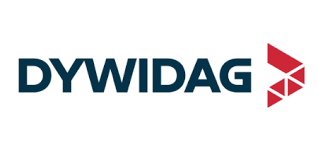Harvester Thresher Market Report
Published Date: 02 June 2025 | Report Code: harvester-thresher
Harvester Thresher Market Size, Share, Industry Trends and Forecast to 2033
This report provides comprehensive insights into the Harvester Thresher market from 2023 to 2033, analyzing current trends, market size, segments, and regional dynamics to forecast future growth and challenges.
| Metric | Value |
|---|---|
| Study Period | 2023 - 2033 |
| 2023 Market Size | $5.20 Billion |
| CAGR (2023-2033) | 6.8% |
| 2033 Market Size | $10.22 Billion |
| Top Companies | John Deere, AGCO Corporation, CNH Industrial, Claas KGaA |
| Last Modified Date | 02 June 2025 |
Harvester Thresher Market Report (2023 - 2033)
Harvester Thresher Market Overview
Customize Harvester Thresher Market Report market research report
- ✔ Get in-depth analysis of Harvester Thresher market size, growth, and forecasts.
- ✔ Understand Harvester Thresher's regional dynamics and industry-specific trends.
- ✔ Identify potential applications, end-user demand, and growth segments in Harvester Thresher
What is the Market Size & CAGR of Harvester Thresher market in 2023 and 2033?
Harvester Thresher Industry Analysis
Harvester Thresher Market Segmentation and Scope
Tell us your focus area and get a customized research report.
Harvester Thresher Market Analysis Report by Region
Europe Harvester Thresher Market Report:
In Europe, the market is anticipated to increase from $1.50 billion in 2023 to $2.95 billion by 2033. Strong regulatory frameworks and a push for sustainable farming practices enhance market growth in this region.Asia Pacific Harvester Thresher Market Report:
In the Asia Pacific region, the Harvester Thresher market is valued at $1.02 billion in 2023, growing to $2.01 billion by 2033. Factors driving growth include the increasing focus on agricultural productivity and government initiatives promoting mechanization.North America Harvester Thresher Market Report:
The North American market is projected to expand from $1.89 billion in 2023 to $3.71 billion by 2033. High adoption rates of advanced farming equipment and a strong emphasis on efficiency contribute to this traction.South America Harvester Thresher Market Report:
South America's market is expected to grow from $0.27 billion in 2023 to $0.54 billion by 2033. This growth is supported by rising investments in modern agricultural technologies and expanding farming activities.Middle East & Africa Harvester Thresher Market Report:
The Middle East and Africa will see the market grow from $0.52 billion in 2023 to $1.02 billion by 2033, driven by agricultural modernization efforts and favorable climatic conditions for farming.Tell us your focus area and get a customized research report.
Harvester Thresher Market Analysis By Machine Type
Global Harvester-Thresher Market, By Machine Type Market Analysis (2024 - 2033)
The machine type segment is led by combine harvesters, dominating both market size and share. In 2023, this segment accounts for approximately $3.52 billion, with a market share of 67.6%. Portable threshers and other machinery follow behind with smaller market shares but are gaining traction due to versatility and ease of use.
Harvester Thresher Market Analysis By Application
Global Harvester-Thresher Market, By Application Market Analysis (2024 - 2033)
Cereal crops are the principal application for harvesters, projected to expand from $2.82 billion in 2023 to $5.53 billion by 2033. Pulse crops and oilseed crops follow, reflecting growing demand for these products in both local and export markets.
Harvester Thresher Market Analysis By Power Source
Global Harvester-Thresher Market, By Power Source Market Analysis (2024 - 2033)
The power source segment is significantly dominated by diesel-powered machines (83.43% market share), with a size expected to grow from $4.34 billion in 2023 to $8.53 billion by 2033. While electric-powered options are rising, they currently represent only 16.57% of the market.
Harvester Thresher Market Analysis By End User
Global Harvester-Thresher Market, By End-User Market Analysis (2024 - 2033)
The end-user market largely consists of large-scale farmers who account for 67.6% share and are projected to reach $6.91 billion by 2033. Small-scale farming also plays a crucial role by catering to niche markets, such as organic and local produce.
Harvester Thresher Market Analysis By Technology
Global Harvester-Thresher Market, By Technology Market Analysis (2024 - 2033)
The industry is transforming through modernization, with traditional technology being prevalent (83.43% share), projected to grow from $4.34 billion in 2023 to $8.53 billion in 2033. However, modern technologies are gradually making headway, catering to the demands for efficiency and sustainability.
Harvester Thresher Market Trends and Future Forecast
Tell us your focus area and get a customized research report.
Global Market Leaders and Top Companies in Harvester Thresher Industry
John Deere:
A leading agricultural machinery manufacturer known for its innovative combine harvesters which integrate cutting-edge technology for enhanced farm productivity.AGCO Corporation:
A key player offering a wide range of harvesting machinery and technologies, AGCO focuses on providing solutions that meet the diverse needs of farmers globally.CNH Industrial:
Offers an extensive portfolio of Harvester Threshers that emphasize sustainability and efficiency, catering to both large and emerging farmers.Claas KGaA:
Renowned for its premium line-up of combine harvesters, Claas focuses on technological advancements and customer-centric designs.We're grateful to work with incredible clients.









FAQs
What is the market size of Harvester-Thresher?
The global market size for the Harvester-Thresher industry is projected to reach 5.2 billion USD by 2033, with a compound annual growth rate (CAGR) of 6.8% from 2023 to 2033.
What are the key market players or companies in the Harvester-Thresher industry?
Key market players in the Harvester-Thresher industry include major agricultural equipment manufacturers like John Deere, AGCO Corporation, and CNH Industrial. These companies dominate the market through innovation and strategic acquisitions.
What are the primary factors driving the growth in the Harvester-Thresher industry?
Growth in the Harvester-Thresher industry is primarily driven by the increasing demand for efficient agricultural practices, advancements in technology, and the need for higher productivity in farming operations.
Which region is the fastest Growing in the Harvester-Thresher?
The Asia-Pacific region is the fastest-growing market for Harvester-Threshers, with a projected growth from 1.02 billion USD in 2023 to 2.01 billion USD by 2033, reflecting increased agricultural mechanization.
Does ConsaInsights provide customized market report data for the Harvester-Thresher industry?
Yes, ConsaInsights offers customized market report data tailored to specific needs within the Harvester-Thresher industry, allowing clients to access insights relevant to their business strategies.
What deliverables can I expect from this Harvester-Thresher market research project?
Deliverables from the market research project typically include comprehensive reports, data analysis, market forecasts, and insights regarding competition and key trends in the Harvester-Thresher industry.
What are the market trends of Harvester-Thresher?
Current market trends in the Harvester-Thresher industry include the rise of smart farming technologies, a shift towards sustainable practices, and increasing adoption of advanced machinery for improved crop yield.
